Subphylum Vertebrata Scientific name Eryx johnii | Higher classification Eryx | |
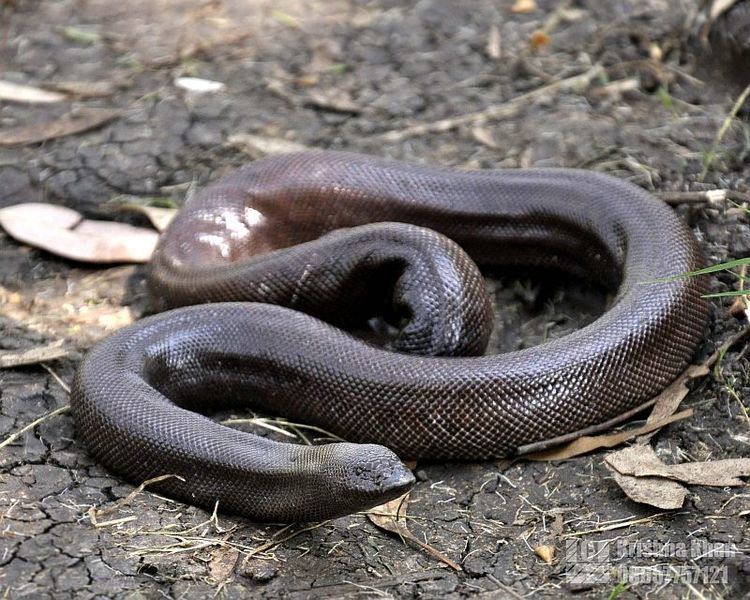 | ||
Similar Eryx, Snake, Old World Sand Boas, Boas, Gongylophis conicus | ||
Eryx johnii is a nonvenomous boa species endemic to Iran, Pakistan, and India. No subspecies are currently recognized.
Contents
- Eryx johnii red sand boa dambi
- Etymology
- Description
- Geographic range
- Habitat
- Diet
- Reproduction
- Illegal trade
- References
Eryx johnii red sand boa dambi
Etymology
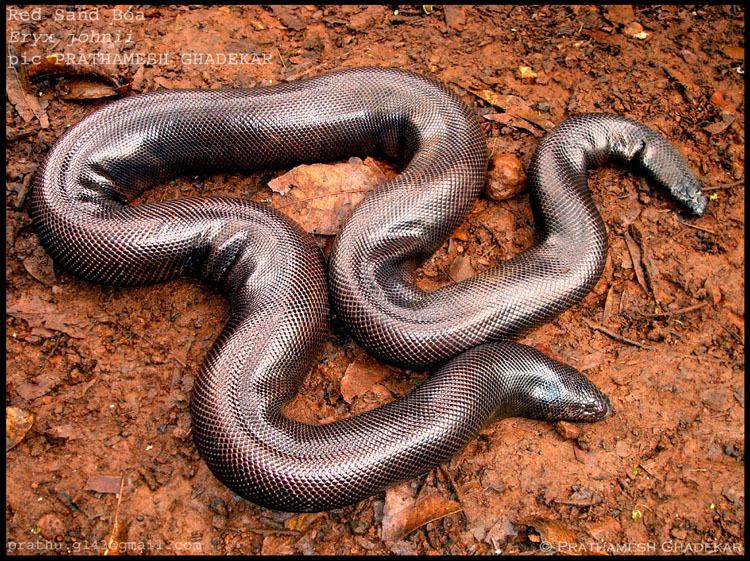
The specific name, johnii, is in honor of German naturalist Christoph Samuel John (1747–1813), who was a missionary in India from 1771 until his death.
Description
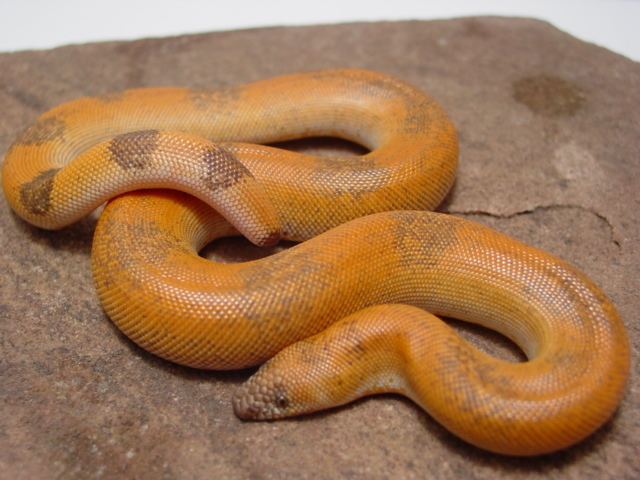
Adults rarely exceed 2 feet (61 cm) in total length (including tail), although they sometimes reach 3 feet (91 cm). Adapted to burrowing, the head is wedge-shaped with narrow nostrils and very small eyes. The body is cylindrical in shape with small polished dorsal scales. The tail, which is blunt, rounded, and not distinct from the body, appears truncated. Coloration varies from reddish brown to dull yellow-tan.
Geographic range
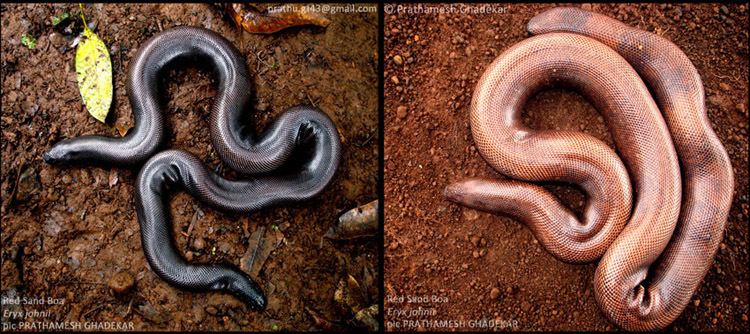
E. johnii is found from Iran through Pakistan into western, southern, and northwestern India. The type locality given is "Tranquebar" (Tanjore, Trichy, southeastern Madras, India). and found in Indian desert.
Habitat
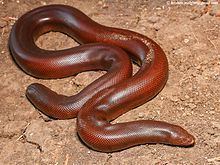
The snake is found in dry, semi-desert scrub plains and rocky dry foothills. It prefers loose sand, or sandy soil that crumbles easily. The Indian sand boa which is also called the Eryx John also lives underground.
Diet
The diet consists mainly of mammals such as rats, mice, and other small rodents that are killed by constriction. Some specimens have apparently fed exclusively on other snakes.
Reproduction
E. johnii is ovoviviparous, with females giving birth to up to 14 young at a time.
Illegal trade
Red sand boas have many superstitious beliefs attributed to them because of their double-headed appearance, such as bringing good luck, curing AIDS, etc. Such blind faith has resulted in endangering the species, and in illegal trade in India, despite being a protected species under Schedule IV of the Wildlife Protection Act, 1972, of India.
